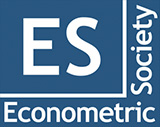Econometrica: Mar, 1990, Volume 58, Issue 2
Hedging Pressure and Futures Price Movements in a General Equilibrium Model
https://www.jstor.org/stable/2938209
p. 411-428
David Hirshleifer
Optimal futures hedging and equilibrium futures price bias are examined in a model characterized by two consumption goods, one of which has stochastically varying output, and where information arrives sequentially. Positive (negative) complementarity in consumer preferences promotes downward (upward) bias in the futures price viewed as a predictor of the later spot price. I demonstrate that the conclusion derived from partial equilibrium analysis--that when speculators are risk averse, risk premia are a function of hedging pressure--fails in the general equilibrium analysis, so long as there are no transaction costs. A counterexample is analyzed in which, as consumers' additive logarithmic preferences are varied, producers' hedging positions change from long to short, while the futures risk premium remains unchanged. However, hedging pressure is reinstated as a force influencing risk premia in the sense that the futures price is downward biased when hedgers take short positions and is upward biased when hedgers take long positions, provided it can be assumed (as is usually valid) that fixed setup costs of trading deter consumers more than producers from participating in the futures market.


